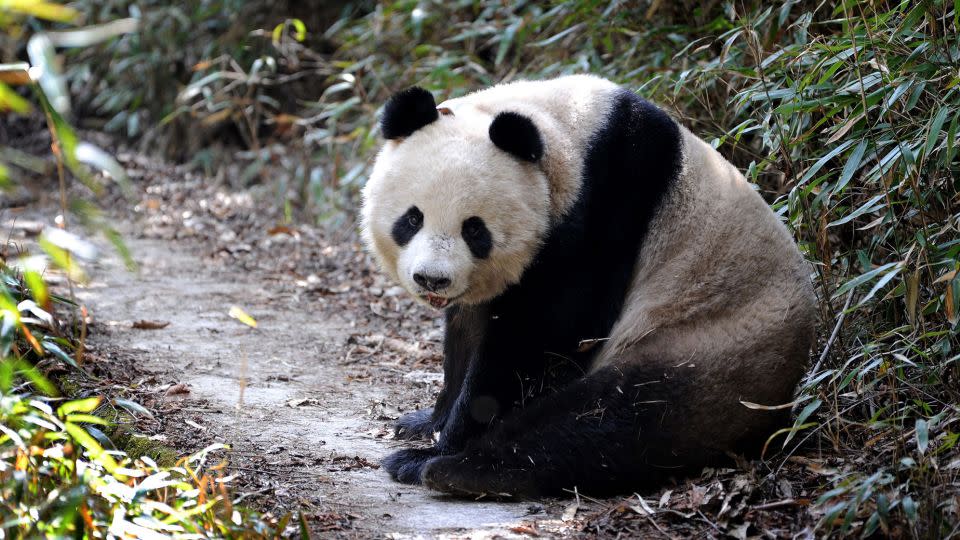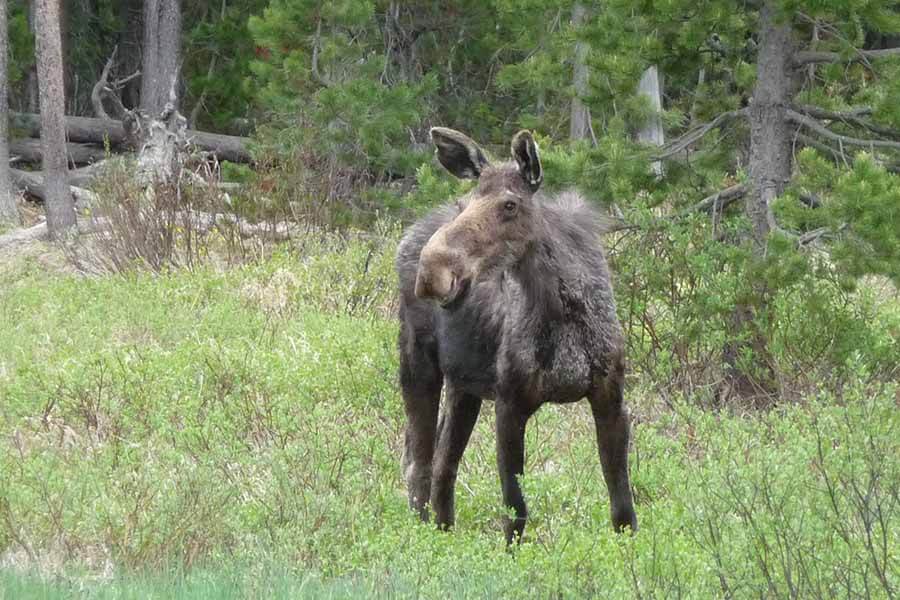Sign up for CNN’s Wonder Theory science newsletter. Explore the universe with news on fascinating discoveries, scientific advancements and more.
With its striking coloration, the giant panda is an instantly recognizable species.
A handful of giant pandas that aren’t black-and-white, however, do exist. These majestic creatures with brown-and-white fur inhabit a single mountain range in China. And now, scientists may have unraveled the mystery of the extremely rare pandas’ unusual coats, according to new research.
The work, which involved studying the genetics of multiple pandas in the wild and in captivity, has suggested that pandas with brown-and-white coats are the result of natural variation, rather than a sign of inbreeding in a dwindling population.
The first brown panda known to science was a female named Dandan. A local ranger found the ailing bear in Foping County in Shaanxi province’s Qinling Mountains in March 1985. The panda was held in captivity until her death in 2000.
Since Dandan’s discovery decades ago, there have been 11 reported sightings documented through official news sources or personal accounts shared with the authors of this latest study that appeared in the journal PNAS on March 4.
“The recurring instances of brown pandas imply that this trait may be inheritable. However, to date, the genetic basis underlying the brown-and-white coat color remains unclear,” the authors wrote.
Gaining a better understanding of the distinctive coloration could help inform efforts to breed brown-and-white pandas in captivity, said senior author Dr. Fuwen Wei, a professor of wildlife ecology and conservation biology at the Chinese Academy of Sciences’ Institute of Zoology in Beijing. The status of the giant panda as a species is vulnerable, according to the International Union for Conservation of Nature Red List of Threatened Species.

A panda family tree
To understand what lies behind the trait, the researchers studied Qizai, a male brown panda rescued as a cub in 2009 from Foping National Nature Reserve in Hanzhong. He is currently the only brown panda in captivity.
When compared under a microscope with hair samples from three black-and-white pandas, Qizai’s brownish fur had fewer and smaller melanosomes, tiny structures found in cells that are responsible for skin and hair pigment in mammals. What’s more, the melanosomes were more likely to be irregularly shaped, the study team found.
The researchers then gathered genetic information about Qizai and pieced together his family tree. Fresh scat, or bear poop, gathered at the nature reserve revealed the identity of his wild mother, a black-and-white female panda that wears a tracking collar and is known as Niuniu.
The researchers also identified Qizai’s son, a black-and-white panda born in captivity in 2020. (The study team later identified Qizai’s father, Xiyue, a wild but tracked black-and-white panda, by studying the genetics of a wider population of pandas.)
The scientists studied the genetic information from Qizai’s family members and compared it with the genetic information from 12 black-and-white pandas from the Qinling Mountains and 17 black-and-white pandas from other regions in China using information taken from scat and blood samples.
While none of Qizai’s immediate family members had brown fur, the researchers were able to show that his parents and son all had one copy of the recessive trait on a gene known as Bace2, while Qizai had two copies.
An individual’s genes can carry recessive traits, such as blue eyes or red hair in humans, without appearing as a physical characteristic. Each parent must possess a copy of the genetic variant and pass it on in order for the trait to appear in the offspring, as is the case with Qizai.
Genetic analysis solves an enigma
Thanks to an analysis of a tissue sample stored for more than two decades in ethanol, the scientists also were able to sequence the genome of Dandan, the first known brown panda. Dandan had the same recessive trait, the researchers found.
The scientists then conducted a wider analysis of 192 black-and-white giant pandas to verify the responsible gene as Bace2. The mutation causing the brown coats was only present in two pandas hailing from the Qinling Mountains in Shaanxi, not Sichuan province, where the majority of China’s giant pandas live.
To confirm the findings, the scientists used the CRISPR-Cas9 gene-editing tool to delete the genetic sequence they had identified as causing the mutation in the Bace2 gene in 78 lab mice. The change reduced the number and size of melanosomes in the mice.
“The coat color of knockout mice is light brown,” said Wei, who is also president at Jiangxi Agricultural University in Nanchang in China’s Jiangxi province.
“It proves that this deletion has the potential to alter the coat color of a mouse, as the pigmentation pathway is relatively conserved (shared) among mammals. Therefore, it is very likely that this mutation influences the coat color of a brown panda.”
Natural variation vs. inbreeding
It’s not clear what caused the genetic mutation. Wei said it must be linked to the specific environment of the Qinling Mountains, which has a different climate than Sichuan. The genetic mutation did not appear to be a result of inbreeding, as once suspected, he said.
“It is more likely to be a result of natural variation rather than inbreeding. Our kinship analysis indicates that Qizai’s parents are not closely related,” Wei added.
Tiejun Wang, an associate professor in the department of natural resources at the University of Twente in the Netherlands, said it was good news that the unique coloration did not appear to be the result of inbreeding. Wang, who has studied brown pandas, was not involved in the study.
“For those who are concerned about this species, this is a positive development,” said Wang, who said he worked as a field ranger in the mountains for 10 years.
Wang said he applauded the team “for their tremendous efforts in trying to shed light on this scientific question.”
For more CNN news and newsletters create an account at CNN.com

Dr. Sarah Adams is a scientist and science communicator who makes complex topics accessible to all. Her articles explore breakthroughs in various scientific disciplines, from space exploration to cutting-edge research.








